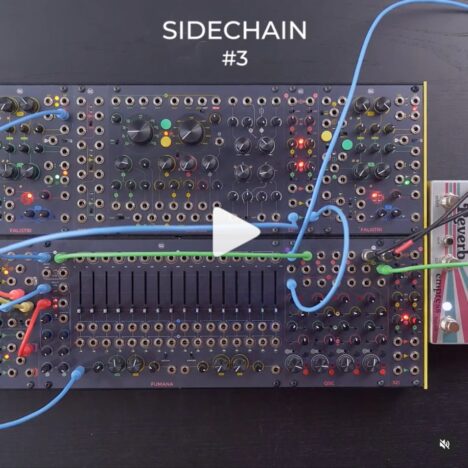- INSTRUMENTS
- EURORACK
- MODULES
- BAGÀI
- 411
- CUNSA – Sound Seasoning
- CGM – Creative Mixer Series
- BRENSO – Entangled Sound Sources
- USTA – The Voltage Score
- FALISTRI – Movement Manager
- SAPÈL – Tamed Random Source
- FUMANA – Dual 16 Bands Spectral Editor
- 321 – Scale + Flip + Shift + Combine
- 333 – ProAudio Sum & Distribution
- SILTA 2016 – discontinued
- SEI – trunk lines – discontinued
- CASES
- ACCESSORIES
- KNOBS
- RESOURCES
- MODULES
- 500 SERIES
- RESELLERS
- ABOUT
- ACCOUNT
Category / talks
-
Frequency Modulation Part 2: (Through-Zero) Linear FM
Today we dive into one of the greatest topics of modular synthesis: Linear FM. What is Through-Zero? What is the difference between linear and exponential FM? How can we use it for sound design? All these questions and many more will find an answer in today’s video!
2022-09-05 -
Modular Expressiveness ep. 4: Ornaments with the USTA sequencer
This time we’ll discuss about the most flamboyant way of adding expressiveness to our piece: grace notes, acciaccaturas, mordents, trills, and any kind of musical embellishment!
2022-09-05 -
Switched-On Bach! Let’s write a four-part fugue on the USTA sequencer.
When we were testing the USTA sequencer, we used one of Bach’s counterpoints to test its capabilities, and we also released it as a teasing video. Someone asked us to show how to program the USTA in such a way, so here we go!
2022-09-05 -
Glitchy Techno Drums with USTA and BRENSO!
As requested, here’s a step-by-step guide to transforming your BRENSO into a sort of Techno-ish drum machine.
2022-09-05 -
A polyphonic and polyrhythmic patch with USTA, FUMANA and FALISTRI
Today’s random picks forced us to build a patch on FALISTRI’s quadrature mode. It is a special envelope chain where an envelope’s stage trigs another envelope’s stage when it ends.
2022-09-05 -
We used FUMANA’s Unvoiced Input to add some extra vibes
We picked three more random Techniques and improvised a patch from scratch! This time, they lead us to the Unvoiced Input, which is something that we tend to overlook on the FUMANA.
2022-09-05 -
Audio-Rate USTA #1
We had to do it. Imagine if the oscillator becomes the clock and the sequencer becomes the oscillator. The question isn’t “why?”, but “why not?”
2022-07-05 -
Sidechain #3
Today we explored another way of using FUMANA’s ALL E.F. output. We used it to tame our reverb send and clear up the mix!
We took advantage of the 321 to scale, invert, and offset it, then patched the result to the QSC effect send.
That’s an easy way to avoid an overcrowded reverb tail!2022-07-05 -
Trills
Another popular embellishment is the trill, where you play a rapid succession of notes before or instead of a longer one.
To do so, we used FALISTRI’s force loop input: check out the trick in today’s Technique!2022-07-05 -
Grace Notes
Grace notes are notes that you play to ornate a melody. Every musical tradition has its own grace notes, so why should we modular players stay away from them?
In Western music you don’t write them as part of the melody: instead, you use tiny notes or symbols on top of it.
Since USTA is the Voltage Score, we want to stick with this concept!
In this Technique, we wrote a plain sequence and used a tiiiiny little envelope patched to the CV A input to add some grace notes here and there through pitch shifting. Happy experimenting!
2022-07-05
Categories
Recent Posts
- CUNSA v/s FUMANA: The same patch on two different filters!
- Subharmonic formant arpeggios patch breakdown: a classic Falistri patch!
- Memes aside, let’s make Sandstorm by Darude on our Frap Tools system
- Four tips to use CUNSA as a sound source (including ringing and additive synthesis)
- ‘Glass sounds‘ analog through-zero FM patch breakdown with Brenso and Cunsa!









